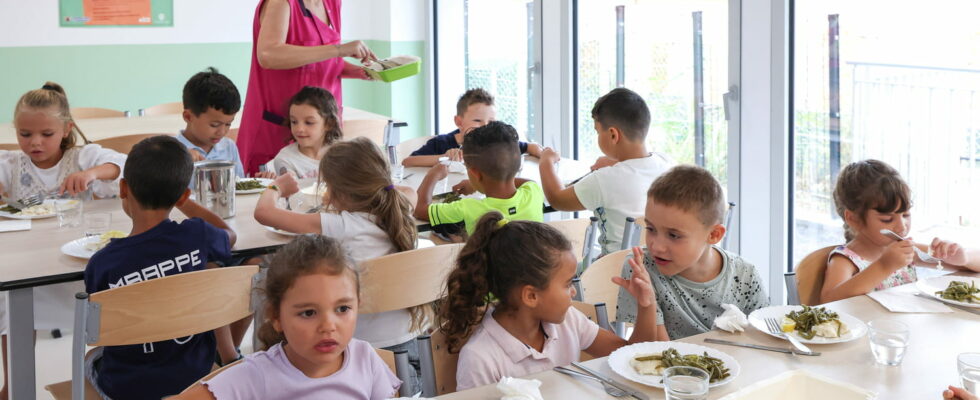In the canteen, the children play a age according to the figure at the bottom of their glass. The true meaning of these numbers is much less fun.
Who has never been distracted in the canteen by looking at the figure inscribed at the bottom of his glass? At school, these numbers defined the age of each and the one that had the smallest number often received a pledge, like that of filling the carafe of water for example. This game would still be commonly practiced today in the refectories. But if this is an entertainment for the little ones, we can imagine that the numbers at the bottom of these glasses are not intended for such use.
It is the Durax company which is at the origin of these quantified glasses. They were first adopted under the “Highlight” model, created in 1946, in the canteens, which then evolved to become the one we all know, named “Picardy glass” and which has invaded schools since the 1980s. These glasses were chosen for their resistance: they are made up of a tempered glass 2.5 times more resistant than a classic glass. With children, it is a safety guarantee in order to limit breakage.

Duralex revealed some time ago what the figures were actually used for the bottom of his glasses: this is the number of the manufacturing mold. “Each mold of the Chapelle-Saint-Mesmin factory is identified by a specific number, carefully engraved at the bottom of the associated glass, so in the event of a defect or problem, we can quickly identify and replace the faulty mold,” explains always the French brand on its site. This also guarantees “authenticity” and the “quality” of products. “In summary, the figures engraved at the bottom of your glass are not only there for the playful aspect, but especially for the sake of quality and customer satisfaction”, adds Durax.
When the production was at its peak, the figures could go up to 50, corresponding to the number of different molds available. A number which ensured a victory in the refectory. However, the company today encounters some difficulties. It was bought in 2021 by the French Maison du Verre, a parent company of its competitor Pyrex, after several months of compulsory liquidation.
Unfortunately, this rescue was not enough in the face of the outbreak of energy prices and a new investment in receivership had to be acted in April 2024. The company was then transformed into a cooperative and participative company last July , then, in December, the French state announced lend it 750,000 euros to go up the slope. The famous glasses could then survive a few more years.
